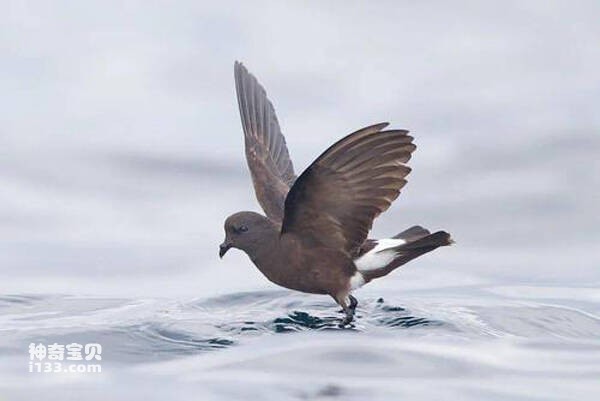Oceanites oceanicus
IUCN
LCBasic Information
Scientific classification
- name:Oceanites oceanicus
- Scientific Name:Oceanites oceanicus,Wilson's Storm Petrel
- Outline:Waterfowl
- Family:
Vital signs
- length:About 17 cm
- Weight:About 40g
- lifetime:No textual research information is available
Feature
It is one of the most widely distributed birds in the world
Distribution and Habitat
Webbed petrels breed along Antarctica's coastline and on nearby islands. During the non-breeding season, they live at sea and head north during the southern winter. They are more common in the Atlantic than the Pacific. During the non-breeding season, the yellow-webbed petrels are a typical pelagic bird, and their breeding location in the Antarctic makes it difficult to see them on land.
It is one of the most widely distributed birds in the world, with an estimated population of more than 50 million pairs worldwide.
Appearance
It is a 17cm long small seabird with a brown-black body, two brown-white spots on its wings, a white waist, and webbed yellow.
Details
Oceanites oceanicus, Wilson' s Storm Petrel is a kind of petrel.

Yellow-webbed petrels often live alone or in small groups. Like many other shearwaters, the yellow-webbed petrels fly low to the surface, flapping their wings loosely, gliding briefly, and sometimes tilting or rolling to feed on prey near the surface. Even in calm weather, they can use the breeze of the waves to fly, and use their long legs to help stabilize their bodies. Yellow-webbed petrels are highly social animals and will also follow sea boats in flight. They squeak a little when they're looking for food. They feed mainly on floating invertebrates at the surface and rarely jump into the water to catch their prey. Small fish of 3-8 cm are sometimes hunted. When feeding, stop in the air and flutter the wings or slapping the water under the feet.

The petrel usually breeds from November to February of the following year, nesting in cave crevices, incubation period 33-59 days, brooding period 46-97 days.
Protect wild animals and eliminate wild meat.
Maintaining ecological balance is everyone's responsibility!








